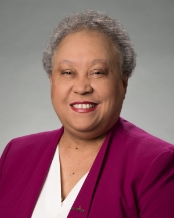By Reginald Stuart
For the first time in the last three years, Historically Black Colleges and Universities (HBCU’s), including Nashville’s Fisk University, did not top the list of institutions facing some sort of accreditation trouble with the Southern Association of Colleges and Schools Commission on Colleges (SACSCOC), the influential peer group ratings organization based in Atlanta.
The group’s last fall meeting of the year ended earlier this month with actions on 197 accreditation items from colleges and universities across the Southwest to Texas to Louisiana and Florida and up the East Coast to Delaware.
Absent were institutions that appeared to dominate the SASCOC agenda in the early years of this century, with falling enrollment, financial obstacles, structural and other issues, officials confirmed. Absent were many other regulatory issues that plagued the institutions for years.
“They have been working hard to comply with the standards,” said Dr. Belle Wheelan, president of the powerful board of the SACS Commission on Colleges.
“More folks (higher education colleagues) are actively involved as peer reviewers providing an opportunity to better understand how their peers analyze institutional responses,” said Dr. Wheelan, a former Virginia higher education administrator who has ridden through the choppy waters of accreditation for Southern colleges for a decade.
“They are meeting with SACSCOC staff to better understand expectations,” Dr. Whelan said of the steps taken by institutions to right their ships.
SACS has stripped a dozen institutions from accreditation in the past decade including Tennessee’s Knoxville College, graduating its last class and closing its doors in 2015. Knoxville College is now scrambling to stay alive with a limited online offering, has lost federal student aid funding, seen it alumni support shrink and is ignored by private donors.
SACSCOC troubles pushed institutions in the region, like Fisk University, the first higher education institution in Nashville, toward the edge of the loss of accreditation ledge, based on a variety of repeated findings from teacher staffing issues to grounds keeping, diminishing cash endowment, enrollment, and support staffing. It has gone through a line of presidents and currently has an alumnus serving as interim president for the second time.
The SASCOC peers have cut no slack on standards, said Dr. Wheelan. The HBCU’s wanted to be treated with equity by their peers, she said. It is happening.
HBCU’s are meeting the SACSCOC standards with greater consistence than was the case toward the end of the last century and early this one. Some are pushing loyal alumni to give more, tightening enrollment and tuition rules and getting surprise financial boosts from the federal government and a new generation of wealthy private donors.
MacKenzie Scott and Melissa Gates, two of the richest women in America today, have each given tens of millions of dollars in the last two years to need HBCUs and their students, according to, announcements confirmed by institutional executives and higher education reporting agencies. Their giving is being replicated in smaller amounts by many new HBCU donors, although overall HBCU alumni giving remains low, according to most reports.
The Gates contribution funds health related outreach like covid-19 immunizations and overall health care. Scott placed no restrictions on use of her funds, unlike federal grants and most other private donations of the past. Some of the millions were used to help pay of delinquent tuition debt.
Meanwhile, many states like Maryland, Pennsylvania and South Carolina, have decided to provide financial bailout packages to their HBCU’s, to avoid the treacherous financial cliff.
Combined, with a new wave of institutional presidents from Virginia to Kentucky from Missouri to Ohio and across Tennessee, HBCU’s have been moving forward, they hope.
“We’re dotting all the I’s and crossing all the T’s” said an educator at an Alabama institution, echoing colleagues at colleges and universities across the region when talking of navigating choppy waters turning corners and moving ahead.
HBCU’s are taking leadership initiatives on several fronts, giving new face and strengths to their efforts in civil rights in the 1950’s and 1960’s, the educator said.
In addition to voter registration efforts, schools are boosting their participation in health campaigns, spurred by concerns over getting health vaccinations that help minimize the spread of the deadly covid-19 and other respiratory diseases.
The combination of fresh money, creative ideas and more spark under the hood, has helped surviving institutions buy time on their futures which were dimming.


